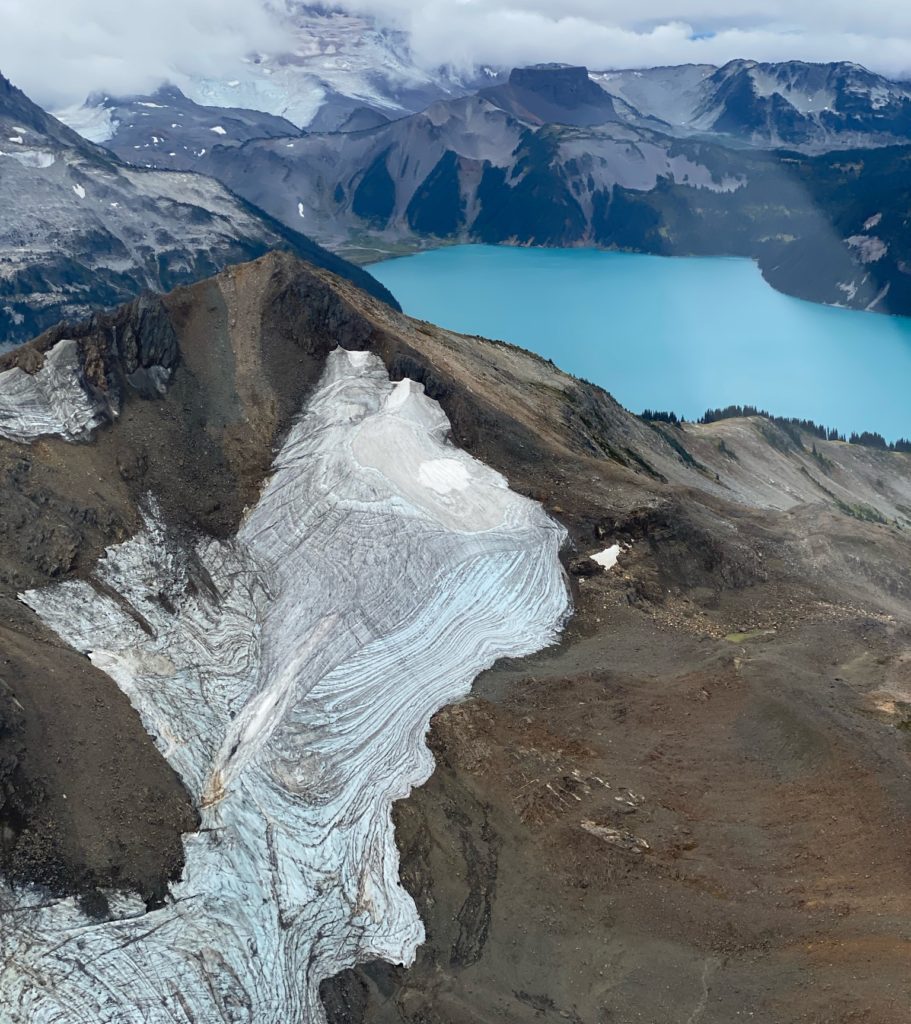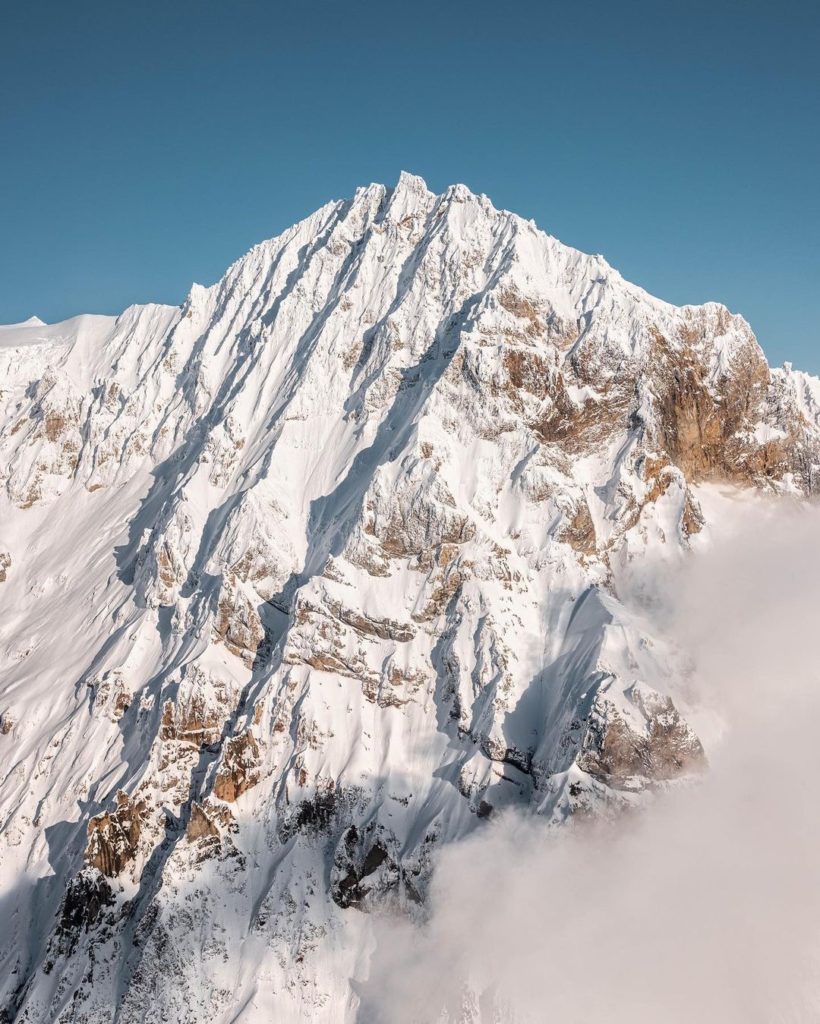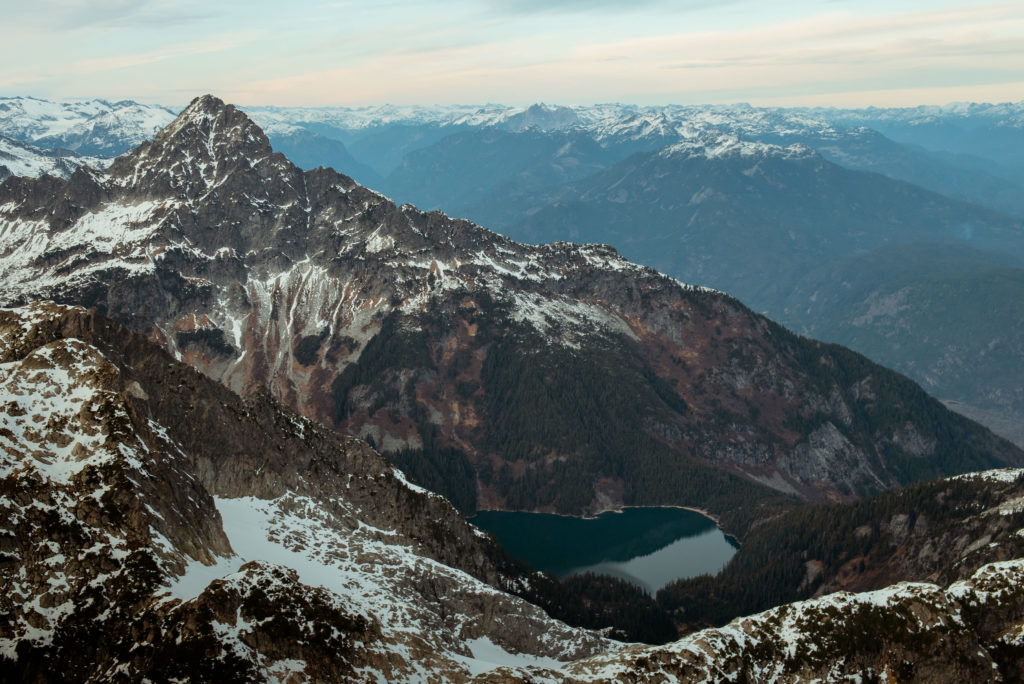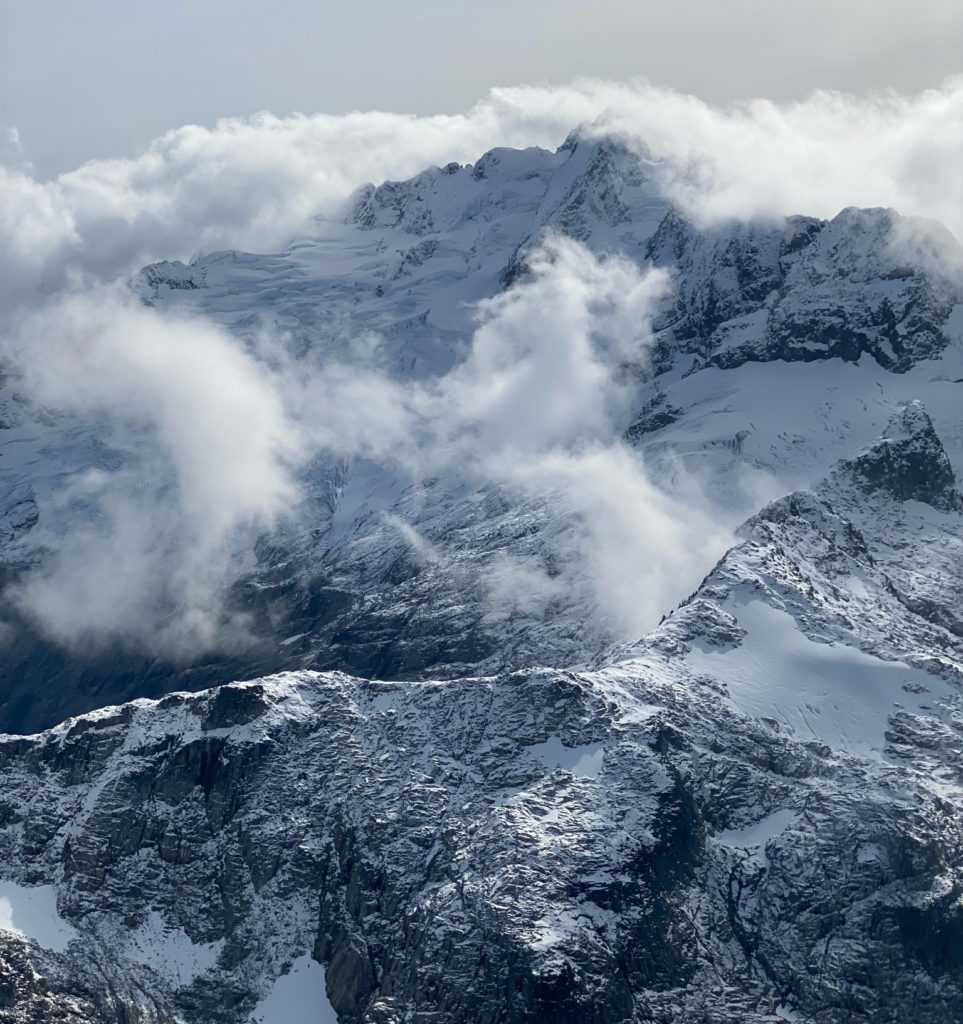The Squamish and Whistler areas are full of incredible geological features we’re fortunate to fly over. We believe that for humans to want to protect any piece of pristine wilderness they must first know the exhilaration and deep connection that comes from spending time in the mountains and oceans. The irony isn’t lost on us that we access these backcountry features by a fossil-fueled aircraft. We spend a lot of focused time considering whether we truly have the right impact. We believe that we do. You can learn more about our Climate Action Plan here, and why we find that the deep connection created in the mountains leaves a formative impression. We hope that once you see what’s out there you’ll want to protect it, too.
Hanging Glacier is likely one of the most well-known geological formations in the area due to its precariously situated location. Perched on the edge of a giant granite cliff, Hanging Glacier is an awe-inspiring sight from the sky. By definition, a hanging glacier originates high on the wall of a glacial valley and descends only part of the way to the surface of the main glacier and abruptly stops, typically at a cliff. You can get a bird’s eye view of this magnificent glacier on our Prehistoric Glaciers & Peaks Tour.
Helm Glacier in Garibaldi Provincial Park is a sight to see, and one you’ll want to experience in a timely fashion. Helm Glacier has been significant in the research of North American Glaciers, as it has been continuously monitored since the late 1960s. Moreover, multiple photographs taken by mountaineers as far back as the 1920s help give an even better indication of the glacier’s change over time. “In a database of sixteen North American glaciers with extensive and comparable datasets, Helm has experienced the most rapid melting of them all,” says this article by the Whistler Museum. We’re sure that once you experience the breadth and beauty of this important piece of our ecosystem, you’ll feel connected to the action of protecting it.

If you’re travelling through Squamish, you can see a glimpse of the stunning West Face of Mount Garibaldi from the valley. Mount Garibaldi is known as Nch’kaý to the indigenous Squamish people and is a stratovolcano that had its last volcanic activity around 10,000 years ago. Like many other stratovolcanoes in the Cascade Volcanic Arc, Mount Garibaldi stands out by itself above the surrounding landscape. This is in contrast to most other volcanoes in the Coast Mountains, which are hidden within higher subranges [1]. When flying over Nch’kaý, you can see epic geological formations surrounding it: the Garibaldi Névé, a large snowfield containing several radiating glaciers, Garibaldi Lake, and the Table. You can experience the starkness of the mountain, along with its surrounding formations on our Whistler Backcountry Air Safari.

Photo Cred: @alicia_haque & @mchutch5
One of the most stunning mountains in the Tantalus Range, Alpha Mountain is a staggering 2,302-metre summit above the turquoise waters of Lake Lovely Water. It’s situated 14 km northwest of Squamish, and just a short flight from our base of operations. Alpha Mountain offers routes for mountaineers, with the first ascent being in 1914, but you can experience the vast beauty via our guided flights. On our Squamish Explorer Guided Scenic Flight, you’ll get shoulder to shoulder with the iconic peaks of Alpha, Ossa and Omega mountains. This fresh and new perspective of the magnitude of the Tantalus Range will leave you wide-eyed!

If you’ve ever driven north up the Sea to Sky Highway from Squamish to Whistler, you’ve probably noticed the epic view of the Tantalus Mountains from the highway’s viewpoint. Within that section of the mountains lies the stunning Rumbling Glacier. It’s the heavily crevassed glacier on the East Side of Mount Tantalus. Seeing this immense, fractured glacier up close, as you soar above it in a plane will give you an impressive understanding of the magnitude of this geological feature. This is just one of the many sights you’ll experience on our Squamish Explorer Guided Scenic Flight. We sincerely hope that when you see these features from a new perspective, you’ll want to protect them too.

[1] Smoot, Jeff (2012). “Mount Garibaldi”. Best Climbs Cascade Volcanoes. FalconGuides. pp. 31–44. ISBN 978-0-7627-7796-9.